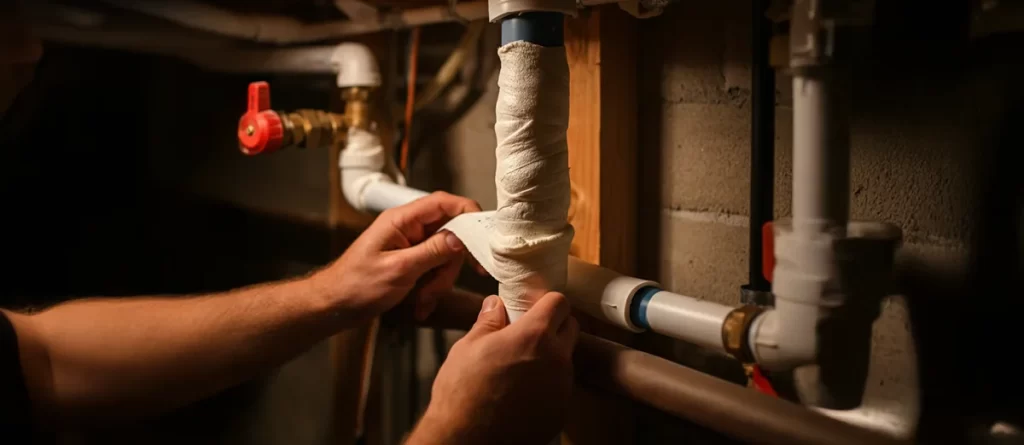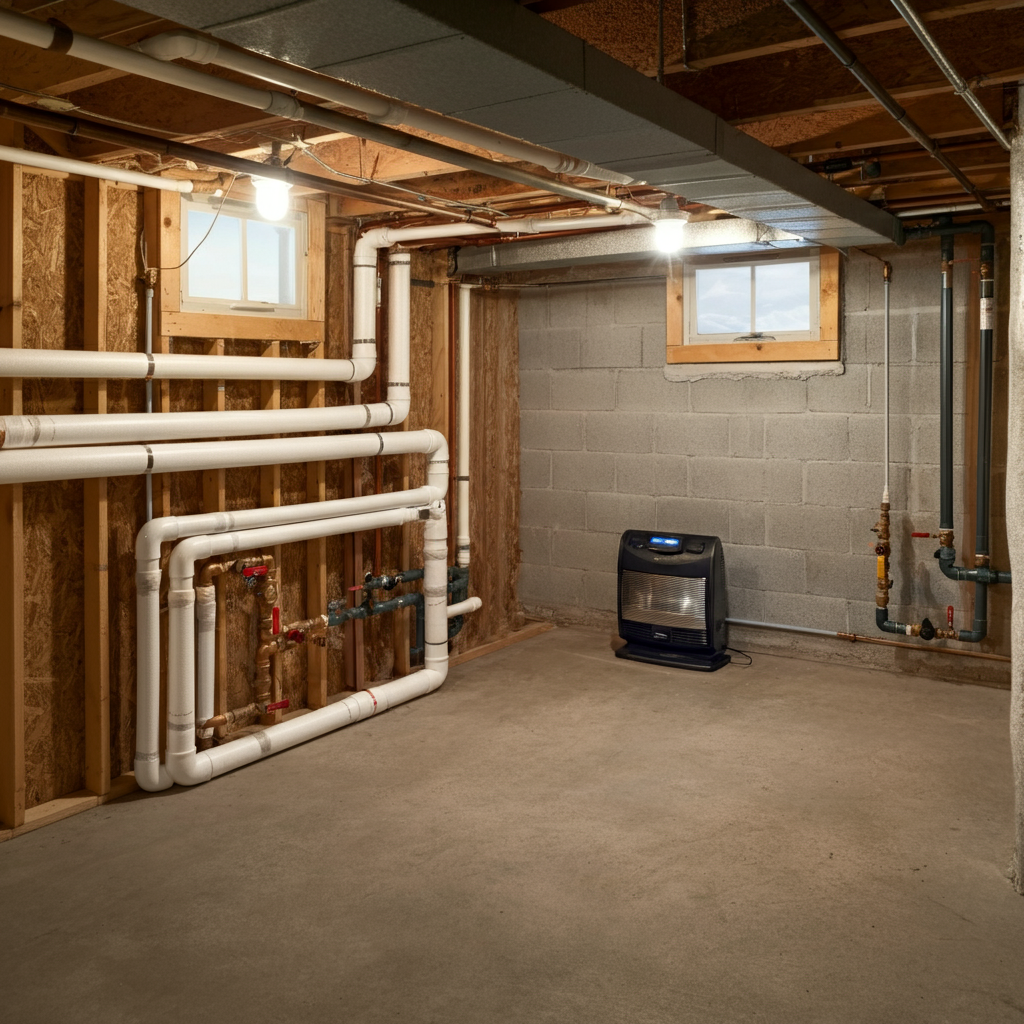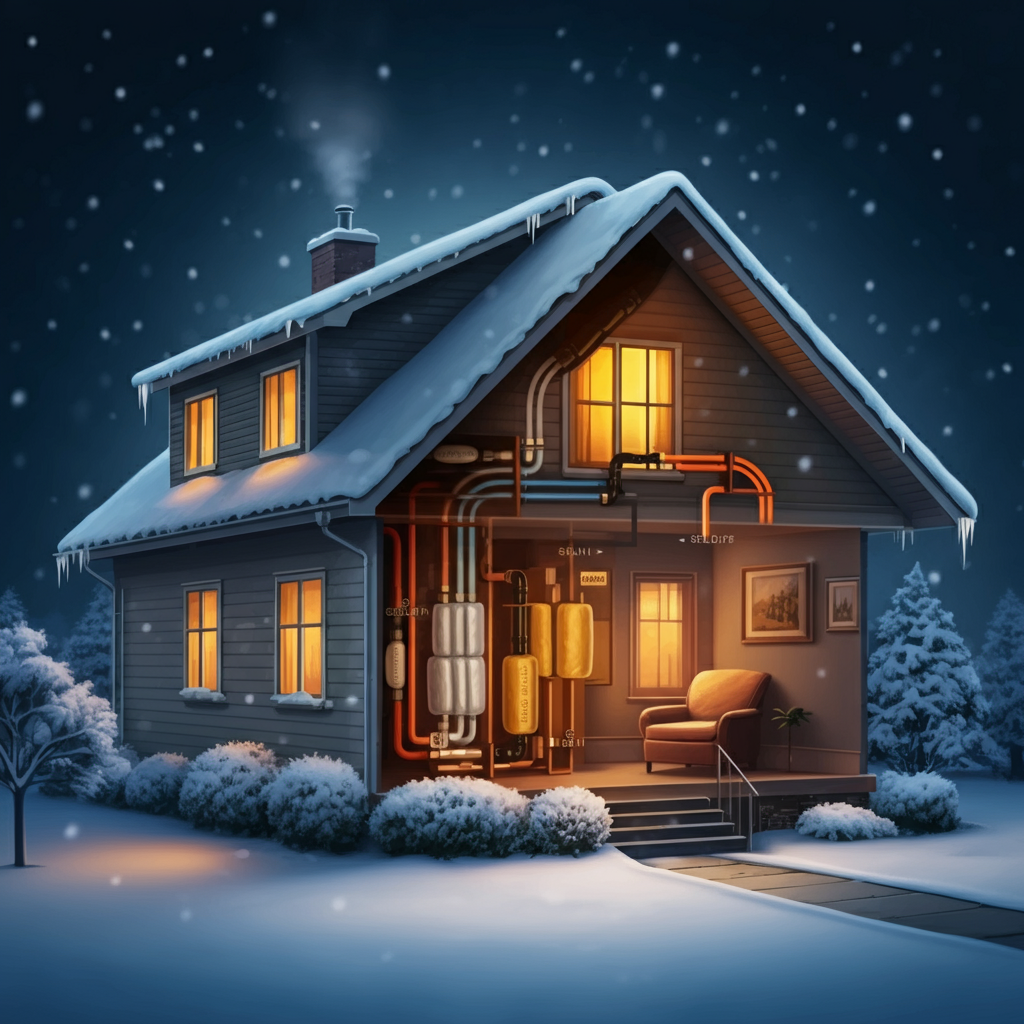As the cold weather settles in, homeowners need to think about more than just their heating system. Winterizing your home’s plumbing is crucial for preventing costly repairs, water damage, and the hassle of frozen or burst pipes. With temperatures dropping, your plumbing system is especially vulnerable to freezing, which can lead to significant damage and expensive fixes. Fortunately, by taking a few simple steps to prepare your plumbing for winter, you can protect your home from potential disaster.
In this blog, we’ll cover essential tips on how to winterize your plumbing system to ensure your pipes remain safe throughout the colder months.
1. Insulate Pipes to Prevent Freezing
One of the most effective ways to protect your plumbing system from freezing is by insulating exposed pipes. Pipes located in unheated areas of your home, such as attics, basements, garages, and crawl spaces, are especially at risk when temperatures dip below freezing. Insulation helps keep the heat in and the cold out, significantly reducing the risk of pipes freezing.
How to Insulate Pipes:
- Use foam pipe insulation or fiberglass insulation sleeves to cover exposed pipes.
- For even more protection, apply heat tape to pipes in particularly vulnerable areas.
- Make sure to insulate any pipes near exterior walls or windows.
Why It’s Important:
- Prevents freezing and burst pipes, which can cause water damage and costly repairs.
- Reduces the likelihood of plumbing issues during winter storms or extreme cold spells.

2. Seal Cracks and Gaps Around Pipes
Cold air can enter through cracks and gaps around and in your home’s windows, doors, and foundation. These openings can make your pipes vulnerable to freezing. Sealing these gaps helps keep cold air out and maintains a consistent temperature around your plumbing.
How to Seal Cracks:
- Inspect areas where pipes enter your home, such as around vents, windows, and doors.
- Use caulking or spray foam to seal any cracks or openings that may allow cold air to enter.
- Check for any gaps in the foundation or walls, and then seal them promptly.
Why It’s Important:
- Minimizes cold exposure to your plumbing, reducing the risk of freezing.
- Helps maintain your home’s energy efficiency by keeping warm air inside.
3. Keep Your Home Warm, Even When You’re Away
If you’re heading out on vacation or leaving your home empty for a while, keep the heat on to prevent your pipes from freezing. Even when you’re not at home, the temperature inside should stay above 55°F (12°C) to prevent your pipes from freezing.
What You Can Do:
- Set your thermostat to 55°F or higher if you’re leaving for an extended period.
- If you plan to leave for a short time, open cabinet doors under sinks to allow warm air to circulate around pipes.
Why It’s Important:
- Keeps pipes at a safe temperature, reducing the chances of them freezing.
- Ensures your plumbing system stays functional while you’re away.
4. Let Faucets Drip to Prevent Freezing
When extreme cold is predicted, letting your faucets drip slightly can help prevent pipes from freezing. The small flow of water relieves pressure and reduces the likelihood of a pipe freezing. This technique is especially useful for faucets located in unheated or exterior areas of your home.
How to Do It:
- Let a cold water faucet run slightly, especially if it’s located on an exterior wall or in an unheated part of your home.
- If you have multiple bathrooms or sinks that are particularly vulnerable, consider doing this for all of them.
Why It’s Important:
- Reduces the pressure that builds up in pipes due to freezing water, preventing pipe bursts.
- Keeps water flowing in the event of freezing, minimizing potential damage.
5. Drain Outdoor Faucets and Hoses
Outdoor faucets and hoses are particularly susceptible to freezing in winter. Water left in the hoses or spigots can freeze and cause pipes to crack. Properly draining and shutting off these fixtures is an easy step in winterizing your plumbing system.
How to Drain Outdoor Faucets:
- Disconnect and drain all garden hoses and store them indoors for the winter.
- Turn off the water supply to outdoor faucets by locating the shut-off valve inside your home, and drain any remaining water from the outdoor spigot.
- Install frost-proof outdoor faucet covers to prevent freezing during extremely cold temperatures.
Why It’s Important:
- Prevents water from freezing in the outdoor faucet and pipes, which can cause expensive repairs.
- Protects exterior plumbing from harsh winter weather.
6. Flush and Drain Your Water Heater
Winterizing your water heater is also essential, especially if you live in an area with extreme winter weather. Flushing and draining your water heater before the cold weather hits ensures sediment buildup doesn’t damage your unit and helps it run more efficiently throughout the winter.
How to Flush and Drain Your Water Heater:
- Turn off the power and water supply to your water heater.
- Attach a hose to the drain valve and let the water drain into a suitable location.
- Once drained, flush the tank to remove any sediment buildup.
Why It’s Important:
- Improves the efficiency and lifespan of your water heater.
- Prevents issues like water damage, flooding, and malfunctioning water heaters during winter months.
7. Inspect and Maintain Your Sump Pump
Winter storms can bring heavy snow and rain, which can cause flooding in basements. Your sump pump plays a vital role in keeping your basement dry, so it’s important to check it before the cold weather sets in.
What to Do:
- Test your sump pump to ensure it’s in good working condition.
- Clean the pump and remove any debris to ensure proper drainage.
- Check that the discharge pipe is clear and can effectively direct water away from your home.
Why It’s Important:
- Protects your basement from flooding during winter storms.
- Keeps your sump pump functioning properly in case of heavy snowfall or thawing.

Conclusion: Prepare Your Plumbing for Winter Now
Getting your home’s plumbing ready for winter is an important step to avoid damage from freezing pipes and harsh weather. Insulating pipes, sealing gaps, and draining outdoor faucets can help prevent expensive repairs and keep your plumbing working smoothly all winter.
Take action today to help prevent the risk of frozen pipes, water damage, and plumbing disasters. If you’re unsure about any of these steps or need professional help, contact Pacific Aire Home Services to ensure your home is fully prepared for winter. Stay warm, safe, and worry-free this winter by properly winterizing your plumbing system!
Winterize Your Plumbing with Pacific Aire
Don’t wait until freezing temperatures cause plumbing problems. From insulating pipes to draining outdoor faucets, Pacific Aire Home Services is here to help you protect your home. Schedule your winter plumbing services today and enjoy peace of mind all season long.
When you choose Pacific Aire, you’re choosing reliability, protection, and a stress-free winter. Let us take care of your plumbing needs so that you can focus on what matters most—staying warm and enjoying time with loved ones. Stay warm, safe, and worry-free this winter by properly winterizing your plumbing system!
Visit https://www.pacaire.com/plumbing/ or call us at 805-737-2564 to schedule your winter plumbing service today.


